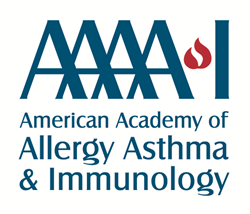
One year after stopping all treatments, the combination of tezepelumab plus immunotherapy resulted in a reduction in expression of a number of genes which control allergic inflammation.
MILWAUKEE (PRWEB)
October 10, 2022
A combination treatment of tezepelumab and allergen immunotherapy for patients with cat allergies resulted in reductions to the nasal allergen challenge (NAC) compared with the treatment of allergen immunotherapy alone. The new research was published in The Journal of Allergy and Clinical Immunology (JACI), an official journal of the American Academy of Allergy, Asthma & Immunology (AAAAI). The trial was conducted by the Immune Tolerance Network and supported by the National Institute of Allergy and Infectious Diseases of the National Institutes of Health.
The study demonstrated that while subcutaneous allergen immunotherapy (SCIT) alone performed better than the placebo after one year of treatment, the effects were no longer present a year after treatment concluded. Patients who received both SCIT and tezepelumab, however, showed a reduction in peak nasal symptoms induced by cat allergen challenge (a key secondary endpoint) one year after treatment was stopped. “We know from prior research that SCIT alone may only be partially effective in some patients, and it needs to be administered for a minimum of three years to induce lasting tolerance,” said Jonathan Corren, MD, first author of the study. “We found that combining tezepelumab plus SCIT resulted in a persistent significant reduction in allergen responsiveness one year after treatment was stopped, indicating that the combination treatment provided a degree of tolerance for patients with cat allergies.”
Researchers conducted the double-blind trial in 121 patients with cat allergies. Patients were randomized to receive SCIT alone, tezepelumab alone, SCIT and tezepelumab combined, or a placebo over 52 weeks, followed by 52 weeks of observation.
In addition to the key finding noted above, combination therapy was also significantly more effective than SCIT alone at week 52. This outcome indicates that there is an additive effect on nasal responsiveness to allergen while patients are actively receiving both treatments.
Serum assessments found that serum concentrations of IL-5 and IL-13 were lower in the combination group compared to SCIT alone, as well as in the tezepelumab alone group. Reductions in cat-specific IgE saw ongoing reductions after week 52 in the combination and tezepelumab groups while the reductions plateaued at week 52 for the SCIT alone group.
Researchers also discovered a number of type 2 gene alterations. Dr. Corren explains, “One year after stopping all treatments, the combination of tezepelumab plus immunotherapy resulted in a reduction in expression of a number of genes which control allergic inflammation. Most important of these were genes which control the production of mast cell mediators, particularly tryptase”.
You can learn more about immunotherapy on the American Academy of Allergy, Asthma & Immunology website, aaaai.org.
The American Academy of Allergy, Asthma & Immunology (AAAAI) is the leading membership organization of more than 7,100 allergists, asthma specialists, clinical immunologists, allied health professionals and others with a special interest in the research and treatment of allergic and immunologic diseases. The AAAAI is the go-to resource for patients living with allergies, asthma and immune deficiency disorders. Established in 1943, the AAAAI has more than 7,100 members in the United States, Canada and 72 other countries. The AAAAI’s Find an Allergist/Immunologist service is a trusted resource to help you find a specialist close to home.
Share article on social media or email:

